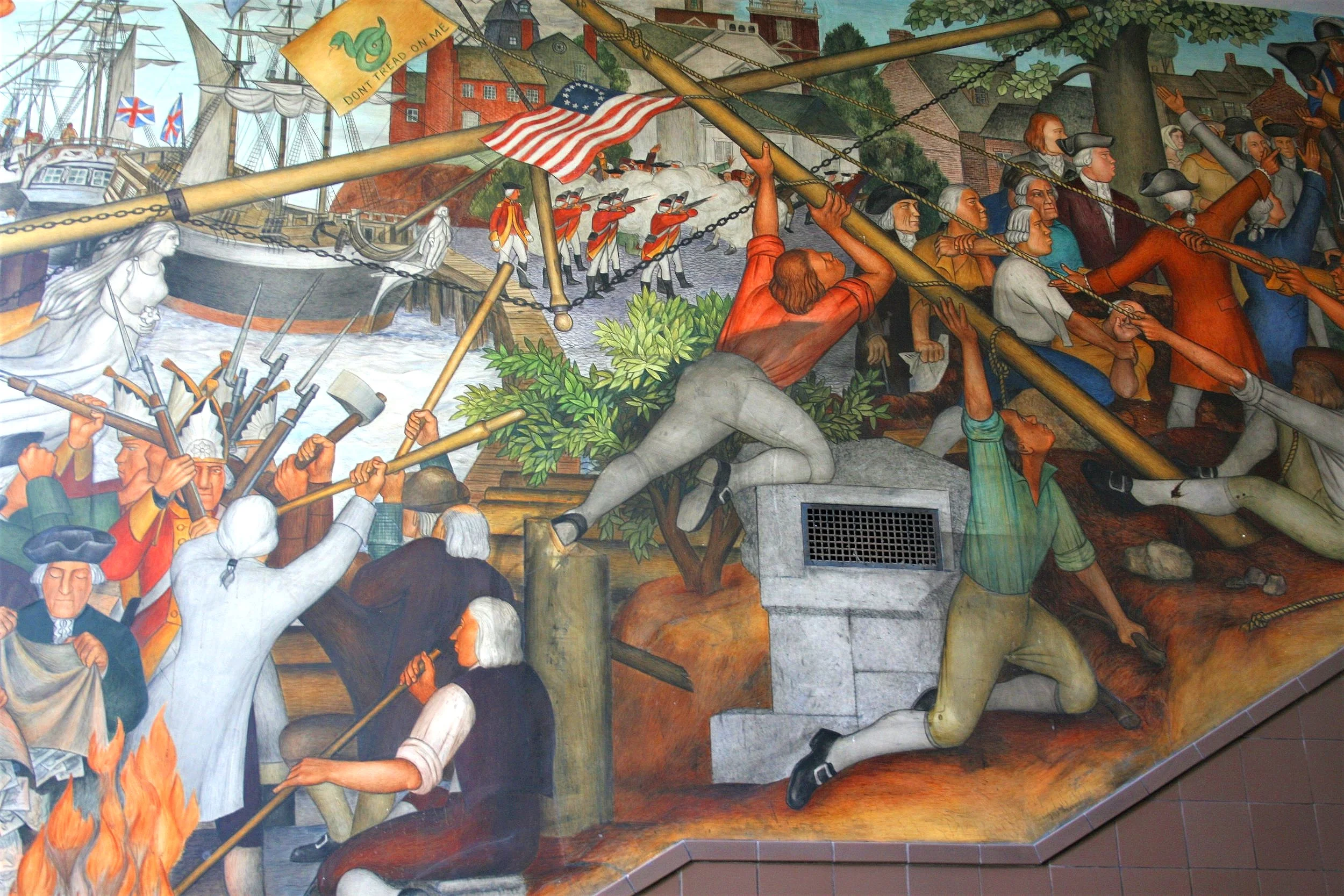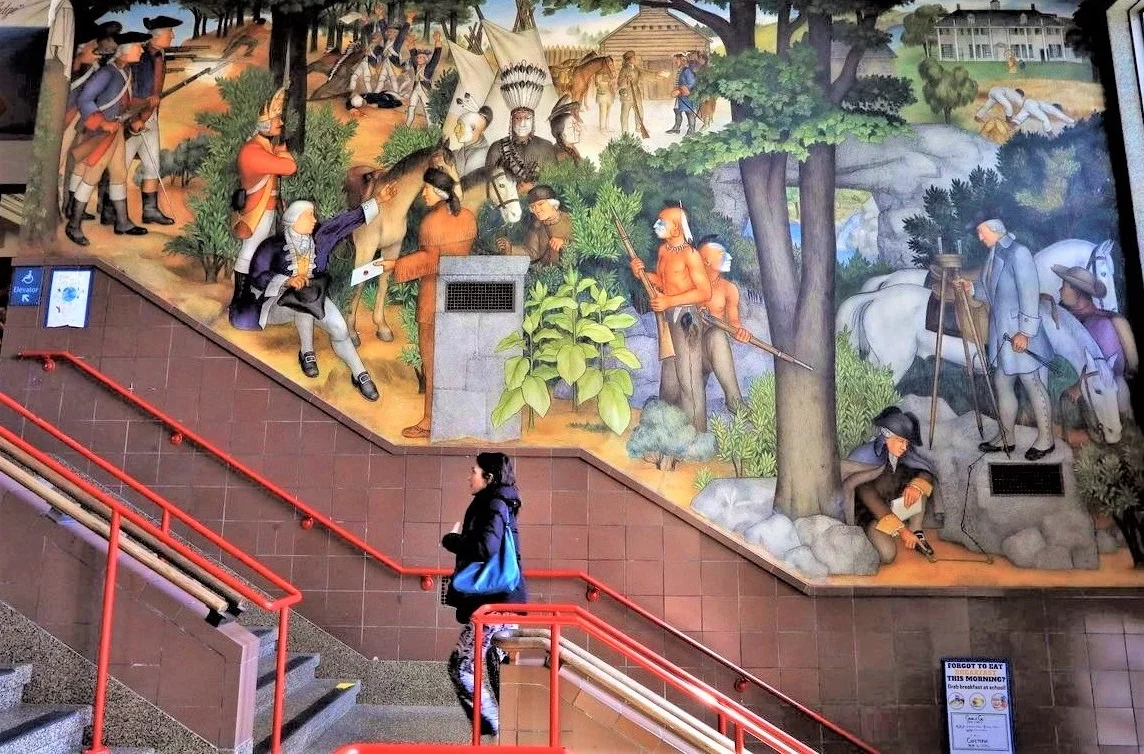Artist Dewey Crumpler Opposes Destroying 'Life of Washington' Mural For Very Good Reasons
/The firestorm over destroying the California New Deal-era George Washington Mural by Victor Arnautoff has hit Politico today. I've shared 2-3 earlier updates on AOC. For a refresher, Politico summarized the situation:
"The San Francisco Board of Education voted unanimously last month to paint over all 13 panels of the 1600 sq. ft. mural “Life of Washington,’’ a historic work commissioned during the New Deal that depicts George Washington as a slave owner. The move came after several vocal protesters demanded the move at a public meeting, saying their children were “traumatized” by depictions of the nation’s first president standing over the images of dead Native Americans."
Well, California Dems are so angry at the San Francisco school board that they sent out an emergency email alert seeking support for an effort to back a voter’s ballot measure to save the murals.
Dubbed the Coalition to Protect Public Art, the initiative aims to protect this art, “and perhaps other New Deal art in San Francisco’’ which may also be targeted.
I suggested last week on this site that they contact the super talented JR and get him to produce a counter mural for the teens. As the ad says "Nobody called me back." LOL I did not know then that already the school has an installation of murals that directly address the disruptive Arnautoff images
Earlier in July Professor Dewey Crumpler, who painted the black radical response to the George Washington murals, explained to ArtNet News why he stands against their destruction. Professor Crumpler, whose OWN MURALS are also painted at the high school to both answer and to expand the disruptive narrative in the original New Deal murals, hang in visual proximity to each other.
That counter narrative was created in response to San Francisco student activism in the ‘60s and ‘70s. Now a professor at The San Francisco Art Institute, Crumpler explains that the Black Panthers were adamant that the murals be destroyed. Like Crumpler, early Black Panther member Emory Douglas belonged to an organization of African American artists put together by a woman named Evangeline [E.J.] Montgomery. Douglas became the minister of culture for the Panthers
After a series of confrontations around the Arnautoff mural when students became angry and threw ink on it, the board of education no longer resisted commissioning the young Crumpler to make new murals as part of saving the original ones.
In his video and also the excellent ArtNet interview, there’s discussion around the subversive message about Washington that was subtle yet recognizable in the original murals.
Before The Squad tars and feathers Democrats and demands that the art be destroyed, it's ironic that the murals' Russian-American artist and Stanford University art professor Victor Arnautoff was a committed Communist.
So the California Democrats are willing to stand for an avowed Communist on the matter of not erasing the murals. Note also that this fight is all going on in Nancy Pelosi's district. And it's going on at the moment we're screaming about the Republican Party lead by Trump as being racist.
Furthermore, Professor Crumpler explains that as a teenager, it wasn’t even taught in his school that George Washington owned slaves. “That’s one reason this was a horrible image for me originally: Arnautoff put slaves next to the president of the United States, and it was that contradiction when I was first saw the mural that threw me.”
I know it's not funny, but I sort of feel like I'm in lala land. I'm fighting every day on get Americans to 1) talk about what we did to the American Indians and 2) deal with slavery and racism. But the most progressive school district in the nation wants to destroy a historic reminder painted by an American communist artist.
It’s hard to believe that the current San Francisco school board didn’t even reach out to Dewey Crumpler on the subject of destroying ‘The Life of Washington Murals’. In reading Jennifer Wilson’s Black People Don’t Need Murals To Remember Injustice for The Nation, she doesn’t mention at all this entire episode around the murals launched by the Black Panthers. or the creation of Dr. Crumpler’s own murals. Talk about selective reporting!!!
Wilson’s point that black and brown people want a future and not just a past is valid. She writes: A future that is both daunting, but bright in that it exists when so many people, George Washington included, wanted otherwise. It reminds me of a line from Toni Morrison’s Beloved, when Paul D leans over to Sethe and tells her, “Me and you, we got more yesterday than anybody. We need some kind of tomorrow.”
Her article would have been much richer, however, if she had discussed the history of the ‘Life of Washington’ murals, Black Panther activism around the murals, and the story of how Dr. Crumpler came to paint a new visual narrative in response. In fact, the story of how the young artist went to Mexico to study with renowned muralists Pablo O’Higgins and [David Alfaro] Siqueiros, is exactly the kind of Harlem Renaissance story Wilson bemoans is absent in the black culture narrative. It’s ironic that she either 1) didn’t fully investigate the mural controversy before writing about it or 2) decided to omit Crumpler’s views on destroying the murals, because it didn’t fit her own narrative.





